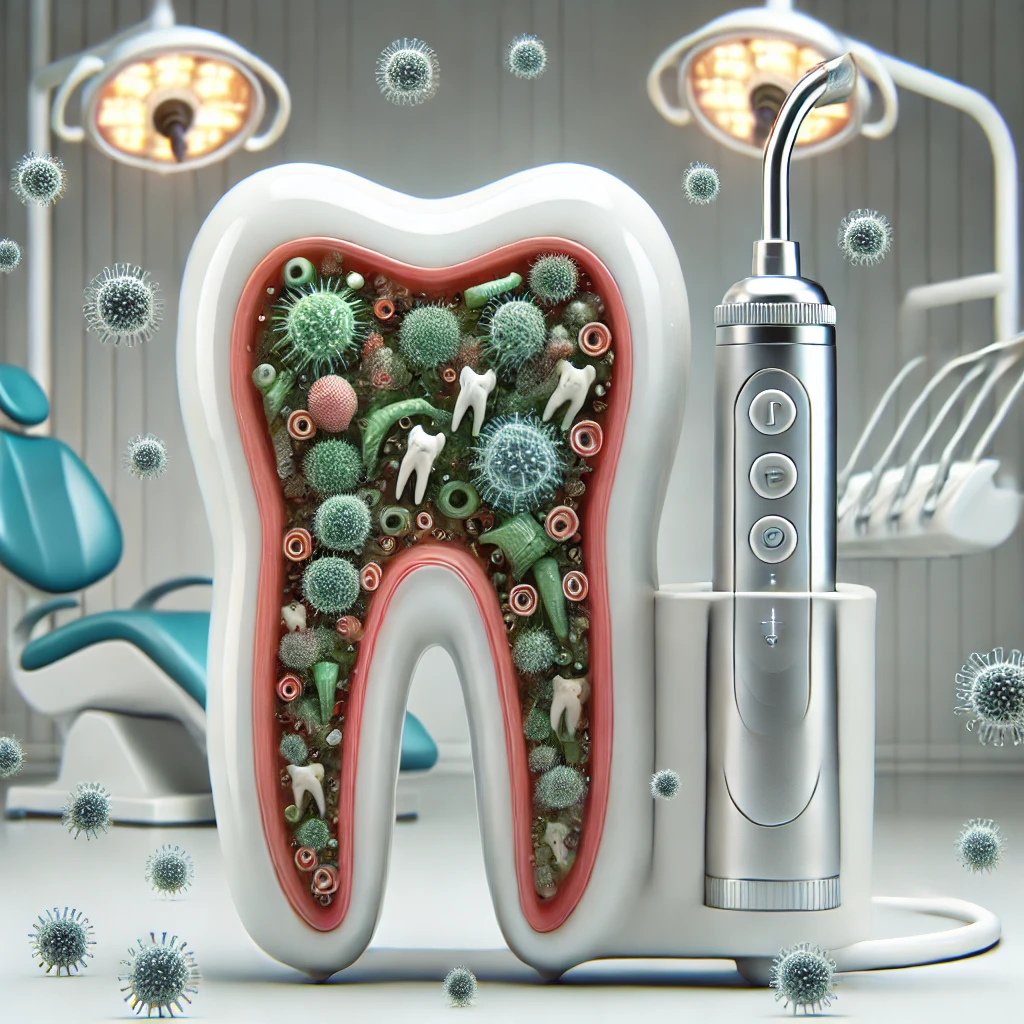A recent study has highlighted a concerning issue with dental irrigators when not properly cleaned: bacterial colonization.

Researchers conducted an in-depth analysis to assess whether daily use of a dental irrigator, specifically the Philips Sonicare AirFloss, could lead to bacteria buildup on the mouthpiece or device. The findings after three weeks of regular use have sparked significant discussion among dental care experts.
Study Methodology
The initial step involved instructing study participants on the correct use of the dental irrigator, referred to as SAF (Sonicare AirFlosser), ensuring proper usage.
Participants were then divided into two groups: one for intraoral use, serving as the test group, and another for extraoral use, for obtaining results.
Both groups followed a 3-week period where they refilled the tank with bottled water (brands like Evian, Malmo) once a week, provided by the researchers.
The intraoral group used the irrigator once daily after brushing, also rinsing the nozzle with bottled water. The extraoral group filled the reservoir and used it continuously until empty.
Samples of saliva, water jet, and bottled water were collected to establish correlations once the study concluded.
Study Results
After three weeks, the dental irrigators were returned with usage information, without any reported discomfort or detailed observations.
Aerobic vs. Anaerobic Bacteria
Before presenting the results, it’s essential to understand the difference between the two types of bacteria studied.
Aerobic bacteria thrive in oxygen-rich environments, while anaerobic bacteria flourish in oxygen-free environments.

Intraoral Group
After three weeks of daily use, the SAF irrigators showed typical aerobic and anaerobic contamination found in water pipes. Individual differences among participants were also noted.
For example, no oral pathogens were detected in one participant’s water, while two others showed minor contamination, and two others tested positive for all eight oral pathogens.
Participants who tested positive for pathogens also had positive results in their saliva samples.
Extraoral Group
After three weeks of daily use, all water jet samples showed bacterial, aerobic, and anaerobic contamination.
Compared to intraoral samples, contamination was lower, and no bacterial growth was observed on the device or in water bottles left unused for a week. In three-week-old bottles, aerobic bacteria levels were very low.
A PCR test for oral pathogens returned negative results.
Nozzle Results
An SEM analysis of one participant’s nozzle tip revealed a thin biofilm on the outer area.
In other words, a bacterial deposit had formed, consisting of various pathogens that had not penetrated the nozzle’s interior but remained on the exterior.
Study Conclusion
After reviewing the evidence, it was determined that SAF devices could be contaminated by bacteria, even within a short period.
Notably, oral bacteria were found on four out of five test devices. This is expected since the mouthpiece contacts the mouth, exposing it to bacteria from the mouth or toothbrush.
Deposits were analyzed, with no oral bacteria detected, yielding negative results. External factors like fingers, cheeks, and other agents that could contact the device were considered.
The biofilm on the nozzle tip formed similarly to a water pipe; the water jet travels from the tank through tubes. If these tubes are not well-maintained, it promotes biofilm accumulation, potentially clogging the tubes or nozzle tip.
Implications for Oral Health
This discovery raises serious concerns about the safety and hygiene of water flossers. Bacteria on these cleaning tools can directly impact users’ oral health, especially regarding the transfer of oral pathogens and other harmful bacteria through the water stream.
Tips for Water Flosser Users
Given these findings, it is crucial that dental irrigator users ensure their devices’ hygiene. This includes regular and thorough cleaning of the mouthpiece and water tank and following the manufacturer’s maintenance and disinfection recommendations.